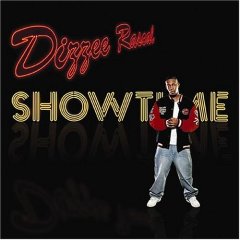
Labels: XL
Review by: Hari Ashurst
If you read a list of “Classic’ Hip-hop albums you might notice something “” there are always a disproportionate number of debut albums making up the list. Rap is unique in the way that for some it is the only viable escape from a world most of us can’t begin to relate to or imagine. The chances of being a hip hop star are “”obviously- very slim. The ones who made it used their rap skills and channelled them through their hunger. This is one keyword I think I could use to describe almost all of the classic Hip-Hop debuts. On Illmatic, Nas was hungry to escape the crack scene that had him “held like a hostage’. Notorious B.I.G eclipsed the hunger displayed on Illmatic on his own debut “Ready To Die’, and even Snoop Dogg on Doggystyle “” though not technically his debut appearance (“The Chronic”) “” sounded hungry to prove he wasn’t just Dre’s sidekick.
Of these artists only Notorious B.I.G released a second album that wasn’t disappointing. But on all three sophomore efforts the punch had been lost. I’m certain that Dizzee Rascal’s own “Boy In Da Corner’ will go down in history as another classic Hip-Hop debut. It is a record that has probably surprised and shocked me more than any other Hip-Hop record. There were sounds and ideas on each track that I had never heard before on anything else, it was challenging and by no means immediate. Although it had a trio of singles that are up there with anything released this millennium (“I Luv U’, “Jus’ A Rascal’, “Fix Up Look Sharp’).
On “Boy In Da Corner’, Dizzee sounded hungry. He wanted to show these exiting and strange sounds to everybody. His yelps and strained voice trying to reach out to people who don’t usually listen to a rapper. But of course with his follow up “Showtime’ “” just a year after his debut “” Dizzee has a lot to prove, and the almost impossible task of bettering “Boy in Da Corner’. A lot of the hunger is missing this time around, but the sonic experimentation is as exiting as ever.
From the very first track you can hear that this is going to be very different and by no means a re-tread of “Boy In Da Corner’ (Although I imagine that must have been tempting). “Showtime’ sounds like a warped Daft Punk track, while Dizzee says “This is whatever you make it to be’. Artistically he is aware of his critics, and on many of the tracks here he launches pre-emptive attacks to those just waiting to trash the album. “Showtime’ is followed by the lead single “Stand Up Tall’, which could teach Morrissey a few lessons about how to wear your pride for your country (or city).
One thing you notice right away is how much Dizzee has improved as a rapper. His flow at times is astonishing, he uses his unique voice as a tool to juggle rhymes “” he drops them in anywhere he feels like, constantly switching up the pace of a song.
The beat on “Hype Talk’ stands out as the best here. I must have heard it about 50 times and still I notice new things. It’s full of offbeat bass guitar and beat juggling. And all the while Dizzee rides the track with consummate ease. He also has the audacity to sample “Happy Talk’ (one of the most universally hated tracks?) on “Dream’, and it works. No, not only does it work, it makes for what could possibly be Grime’s first Number One single. “Do It’ on “Boy In The Corner’ was a great closing track and with “Fickle’ Dizzee again pulls of the trick of a great end, full of drama and introspection.
I’m not going to pit “Boy in The Corner’ against “Showtime, they are both very different (which is surprising considering the amount of time in-between). Dizzee has, however accomplished something a lot of rappers have failed at – a great 2nd album. Time will tell exactly how good this is; it doesn’t quite feel like a classic, but it is a remarkable feat and an excellent album.